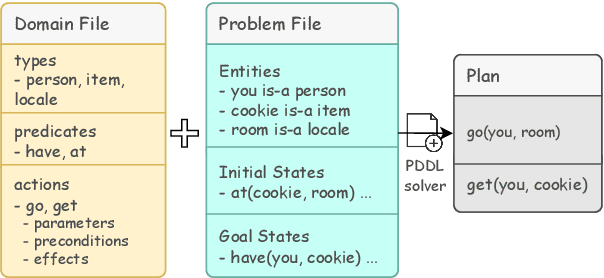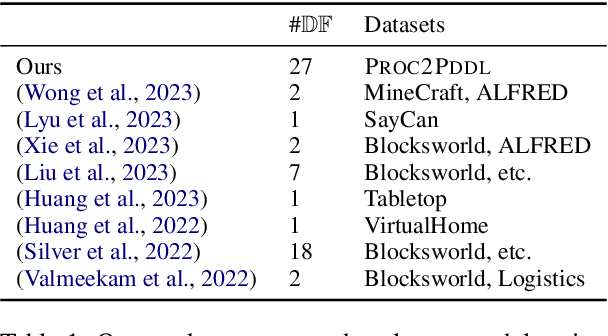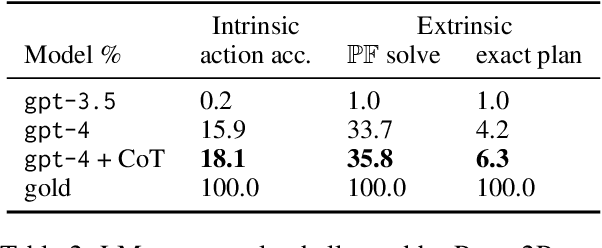Zhaoyi Hou
PROC2PDDL: Open-Domain Planning Representations from Texts
Feb 29, 2024



Abstract:Planning in a text-based environment continues to be a major challenge for AI systems. Recent approaches have used language models to predict a planning domain definition (e.g., PDDL) but have only been evaluated in closed-domain simulated environments. To address this, we present Proc2PDDL , the first dataset containing open-domain procedural texts paired with expert-annotated PDDL representations. Using this dataset, we evaluate state-of-the-art models on defining the preconditions and effects of actions. We show that Proc2PDDL is highly challenging, with GPT-3.5's success rate close to 0% and GPT-4's around 35%. Our analysis shows both syntactic and semantic errors, indicating LMs' deficiency in both generating domain-specific prgorams and reasoning about events. We hope this analysis and dataset helps future progress towards integrating the best of LMs and formal planning.
Large Language Models as Sous Chefs: Revising Recipes with GPT-3
Jun 24, 2023


Abstract:With their remarkably improved text generation and prompting capabilities, large language models can adapt existing written information into forms that are easier to use and understand. In our work, we focus on recipes as an example of complex, diverse, and widely used instructions. We develop a prompt grounded in the original recipe and ingredients list that breaks recipes down into simpler steps. We apply this prompt to recipes from various world cuisines, and experiment with several large language models (LLMs), finding best results with GPT-3.5. We also contribute an Amazon Mechanical Turk task that is carefully designed to reduce fatigue while collecting human judgment of the quality of recipe revisions. We find that annotators usually prefer the revision over the original, demonstrating a promising application of LLMs in serving as digital sous chefs for recipes and beyond. We release our prompt, code, and MTurk template for public use.
Human-in-the-Loop Schema Induction
Feb 25, 2023Abstract:Schema induction builds a graph representation explaining how events unfold in a scenario. Existing approaches have been based on information retrieval (IR) and information extraction(IE), often with limited human curation. We demonstrate a human-in-the-loop schema induction system powered by GPT-3. We first describe the different modules of our system, including prompting to generate schematic elements, manual edit of those elements, and conversion of those into a schema graph. By qualitatively comparing our system to previous ones, we show that our system not only transfers to new domains more easily than previous approaches, but also reduces efforts of human curation thanks to our interactive interface.
 Add to Chrome
Add to Chrome Add to Firefox
Add to Firefox Add to Edge
Add to Edge